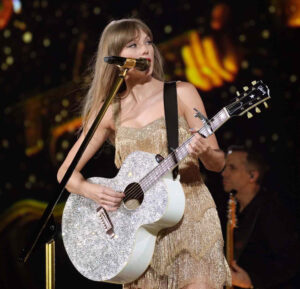The recent conference on Art Schools and Residencies, hosted by the Art Students League, provided a compelling platform for discussing the evolving roles of art education and the significance of artist residencies in shaping contemporary artistic practice. The day was marked by lively and insightful discussions from a variety of perspectives—educators, artists, curators, and program directors—offering a broad view of the challenges and opportunities within the art world today. Key themes included the adaptability of art schools to the changing cultural and economic landscapes, the impression of residencies on artistic development, and the ongoing debate about the value of formal education versus alternative paths to becoming a successful artist.
The Changing Role of Art Schools
One of the most discussed topics during the conference was the evolving role of art schools in the 21st century. In the past, art schools were often seen as the gatekeepers of artistic success, providing students with both the technical skills and the cultural capital needed to enter the professional art world. However, as the cultural and economic landscapes have shifted, so too have the expectations placed on art schools. Rising tuition costs, increasing student debt, and a competitive job market have led many to question whether traditional art school models still serve the best interests of emerging artists.
Many speakers emphasized the need for art schools to adapt by incorporating more interdisciplinary approaches and addressing the realities of the current art market. Schools that once focused primarily on technical training are now under pressure to include a broader curriculum that covers topics like entrepreneurship, digital literacy, and social engagement. Panelists argued that teaching artists to navigate the business side of their careers—such as marketing, networking, and portfolio management—is just as important as teaching them traditional skills like painting or sculpture.
At the same time, several speakers highlighted the importance of maintaining a balance between fostering creativity and preparing students for the professional world. Too much focus on the commercial aspects of art could stifle innovation and risk turning art schools into career-training centers rather than places where artistic experimentation can thrive. This tension between the creative and the practical was a recurring theme throughout the conference, with no easy solutions in sight.
The Rise of Artist Residencies
Artist residencies were another major focal point of the conference, with many panelists advocating for residencies as vital opportunities for artistic growth. Residencies offer artists dedicated time and space to focus on their work, often in stimulating new environments, and can provide a much-needed break from the pressures of day-to-day life. They also allow artists to engage with new communities, collaborate with other artists, and experiment with different mediums or ideas in ways they might not have the time or resources for in their regular practice.
Panelists noted that residencies have grown in both number and variety over the past few decades, offering a wide range of opportunities tailored to different needs and career stages. Some residencies provide artists with a stipend, housing, and materials, while others focus more on networking and mentorship. Despite their differences, many residencies share the common goal of helping artists develop their work outside the constraints of the traditional studio or academic environment.
Several speakers discussed the role that residencies play in providing alternative educational experiences to those offered by art schools. Whereas art schools are often structured around rigid curricula and assessments, residencies offer a more flexible and self-directed form of learning. They allow artists to set their own goals, pursue their own interests, and learn through doing—often in collaboration with other artists and mentors. In this sense, residencies can serve as a complement to, or even a substitute for, formal education.
Art Schools vs. Residencies: Competing or Complementary?
One of the liveliest discussions of the day centered on the question of whether art schools and residencies are in competition with one another or whether they serve complementary roles in an artist’s development. On one hand, residencies are increasingly seen as an attractive alternative to formal education. With the rising costs of art school, some young artists are choosing to bypass traditional institutions in favor of pursuing residencies, which can offer similar opportunities for growth without the financial burden of tuition.
On the other hand, many panelists argued that art schools and residencies each offer distinct benefits and should not be seen as mutually exclusive. Art schools provide foundational skills, critical feedback, and access to resources that are difficult to find elsewhere. They also create a structured environment in which students can develop discipline and a sense of community with their peers. Residencies, by contrast, are often less structured and more focused on providing space for artistic exploration. While residencies can offer valuable opportunities for professional development, they are generally shorter-term experiences and cannot replace the comprehensive training that art schools provide.
Several speakers also pointed out that residencies are increasingly being integrated into art school programs, blurring the line between these two forms of education. Some art schools offer residency-style programs where students spend a semester or more in a studio environment, working independently on their projects under the guidance of visiting artists and mentors. These hybrid models allow students to benefit from both the structure of art school and the freedom of a residency, offering a more holistic approach to artistic education.
Access and Equity
A recurring theme throughout the conference was the issue of access and equity in both art schools and residencies. Many speakers noted that the cost of art education remains a significant barrier for many aspiring artists, particularly those from underrepresented backgrounds. Similarly, while residencies often provide free or subsidized housing and materials, they can still be inaccessible to those who cannot afford to take time off work or travel to distant locations.
Several panelists called for art schools and residency programs to take a more proactive approach to addressing these inequities. This could include offering more scholarships, reducing tuition costs, or creating more accessible residency opportunities that accommodate artists with different financial, familial, or professional obligations. The importance of creating more inclusive and diverse spaces for artistic development was emphasized throughout the day, with many speakers highlighting the need for the art world to reflect the broader society it serves.
By the end of the conference, it was clear that both art schools and residencies have vital roles to play in shaping the future of artistic practice. While there are challenges facing both institutions—rising costs, the need for more inclusive access, and the pressure to adapt to a changing world—they remain essential avenues for nurturing artistic talent. The conference underscored the importance of continued dialogue and connection between art educators, residency directors, and artists themselves in order to create more opportunities for growth, experimentation, and professional success. As the art world continues to evolve, so too must the educational and developmental systems that support it, ensuring that artists from all backgrounds have the resources and opportunities they need to thrive.
No comments yet.








